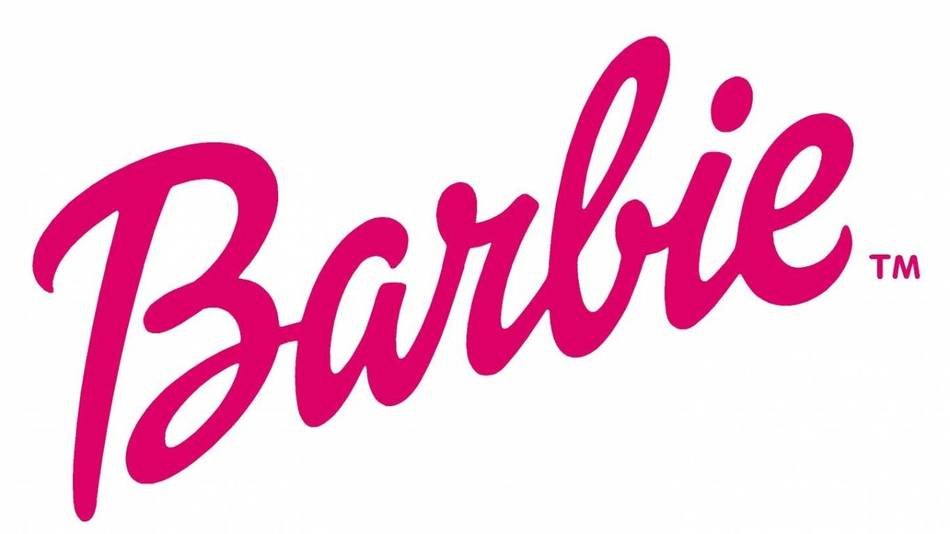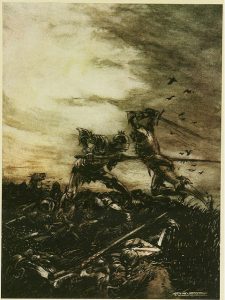
I’m a Barbie girl, in a Barbie world! For many children, the “Barbie world” has provided an outlet to act out and play on their dreams of growing up. With her fabulous outfit changes, wide-ranging career opportunities, and iconic merchandise, the Barbie doll was and continues to be a memorable aspect of childhood, a product of imagination, and an influencer of the way a nation of girls has come to see themselves. Though the world knows Barbie as her own person, a lot of her personality can be viewed as a reflection of the woman who birthed her, Ruth Handler.
Handler was born on November 4, 1916, in Denver, Colorado into a family full of hard-working and supportive businesspeople. As a child, Handler didn’t like dolls and never played with them. In fact, she was a self-proclaimed tomboy who preferred working over playing. In fact, Barbie’s iconic resume of diverse professions can be viewed as a reflection of Ruth’s early-set enthusiasm for job opportunities. Handler was always picking up and enjoying jobs, ranging from working as a cashier at a pharmacy when she was ten years old, to working at a family luncheonette, and even temporarily managing it. When recalling her early entrepreneur days, Handler stated, “I don’t know what was driving me, but I needed to prove myself from the day I was born.”1
Later on, Ruth married an aspiring artist by the name of Isidore Handler, whom she referred to by his middle name, “Elliot.” Together, they moved to Los Angeles, California, where Ruth worked at Paramount and Elliot at the Beranek and Erwin Lighting Fixture Company. With Elliot’s artistic talent and Ruth’s natural salesmanship, the two were able to launch a successful business. Soon after the beginning of this partnership, Ruth became pregnant with their first child, Barbara Joyce Handler, and three years later with her second, Kenneth Robert, also known as Ken. Although she loved her children dearly and enjoyed spending time with them at home, she “missed the fast-paced business world.” For women in the 1940’s, the combination of being a full-time worker, mother, and wife was uncommon. Ruth Handler was ahead of her time.2
Together, Ruth and Elliot, along with an old coworker of Elliot’s named Harold “Matt” Matson, launched the business named Mattel. Their company faced several obstacles, including increased demand from the company that caused Ruth to devote more of herself to the company, thereby driving Harold away. Through the investment of Ruth’s brother-in-law, Mattel was able to grow, and by 1952, the company had employed seven hundred office and factory workers. One of their first toys, the “Burp Gun,” which was based on the Mickey Mouse Club show, was introduced at Toy Fair, an event for companies to launch their products to store buyers, where it was loved and purchased in large orders. Unfortunately, the show didn’t air until later in the year, meaning the consumers didn’t know anything about the toy, and thus it resulted in cancelled orders and hardly any sales for Mattel. Once the show aired, however, the “Burp Gun” was a huge success—even President Dwight Eisenhower’s grandson received one!3 This hit toy proved that marketing to kids, rather than to store buyers, was a smart move to make, and it paved the way for the next toy that would aim to appeal to young girls.4
Elliot was usually the one in charge of designing the toys, but Ruth had developed a design of her own this time. As she raised her kids, she paid attention to her daughter, Barbara’s, playtime and noticed that she and her friends quickly became bored and uninterested by the baby dolls that were the available toys for girls in the 1950s. Because of the societal ideals for women during this time, these dolls were either made for young girls to practice being “Mommy” and nurture them as if they were their own babies, or they were “glamour” dolls which guided girls to buy and learn how to use beauty products. Ruth noticed that her daughter Barbara and her friends preferred to play with adult paper dolls, despite the frustrating fragility of the material.5 In an interview, Ruth explained these observations. “They would sit and carry on conversations, making the dolls real people. I used to watch that over and over and think: if only we could take this play pattern and three-dimensionalize it, we would have something very special.”6

Ruth’s design for the doll was very much influenced by the ideals of women and beauty during the 1950s, especially with standards set by movie stars and pinup girls. Ruth wanted her doll to be pretty enough for girls to aspire to look like her when they grew up, as the doll would embody what the girls would like for themselves. The doll she used for inspiration was the “Bild-Lilli” doll, which was a risqué novelty gift for men—a much different target audience than the one Ruth had in mind. Ruth was insistent on creating her doll with similar features, despite her husband’s protests that “no mother is going to buy her daughter a doll with breasts.” The rest of the all-male team agreed with him, saying that the doll Ruth envisioned was too curvy, sexual, and expensive.7 Even still, Ruth wanted this doll to represent everything a girl could aspire to be as a teenager, and argued that “a little girl could dream dreams of growing up and every grown-up she saw had breasts!”8
As a businesswoman herself, frustrated with the idea of staying home and being a housewife all day, Ruth wanted to design the doll in a way that would get girls to aspire to have duties that went beyond the kitchen. One of the ways in which the doll would achieve this was through her clothing and accessories. Her outfits featured in stores would not only follow the fashion trends seen on both celebrities and on the general public, but also would be made in accordance with her varying professions, such as a pink doctor’s coat or a navy blue police officer’s uniform.9 Author of Forever Barbie, M.G. Lord, said it best, “Barbie was her own woman. She could invent herself with a costume change.”10 The goal was for little girls to fashion and model her to their hearts content, and to know her as her own person, as well as a person they could aspire to be like someday.

With the messages of glamor and opportunity encompassing each plastic doll, Ruth felt sure that her toy would be a success. This doll was her dream. At the Toy Fair, Mattel introduced the doll as “Barbie Teenage Fashion Model” in order to decrease the attention of her sexuality and increase the message to parents that Barbie would serve to inspire young girls to be well-groomed. This wasn’t enough. The doll was hated! Interviewed parents were disturbed by Barbie’s figure, buyers were concerned over her breasts and sex appeal, and toy industry competitors were shocked that another company would try to sell “whore-looking dolls.” Even Lou Kieso, the representative buyer for Sears, who could heavily influence Barbie sales, was unimpressed and refused to take a sample back to the Sears headquarters, as did a majority of the other buyers. Ruth was devastated. She cut the entire production by nearly half and spent the next few months worrying about what would become of her creation, of whether it would disappear before even having the chance to be introduced to the public.11
But then, everything changed. Once the television commercials aired, school ended for the summer, and kids started seeing the doll on the shelves of the stores, Mattel started getting calls from buyers who wanted to buy the Barbie doll. Ruth recalled that “the industry was just going frantic with demand for Barbie.” It was like the “Burp Gun” all over again. The public fell in love with Barbie, and Ruth’s dream for the doll to allow girls to impose their dreams and their own realities onto the dolls, that girls would view Barbie as themselves rather than someone to nurture, was coming true.12

Barbie has become one of the best-selling toys in history, as well as the best-selling doll in the world. She brought in sales that reached in the billions, and her six-letter name would receive recognition around the world. That being said, Ruth didn’t just create a money machine. By birthing Barbie, Handler also created a controversial icon that would spark heated debates later on. For Ruth, as well as for many others in the world, Barbie was not simply a symbol of beauty, but rather, her purpose was to provide the opportunity for girls to define what it means to be feminine in their own way.13 However, arguments have and continue to be made over Barbie’s unrealistic body proportions, her exclusion of people who look different than white, thin, able-bodied women, as well as whether her emphasis on fashion overshadows the actual career she’s dressing as—implying that women care more about how they dress for their job than actually working. The Barbie doll has become the subject of conversations regarding important societal issues, such as gender roles, feminism, and body image.14
Hearing the voices of movements, critics, and fans, Mattel has been continuously attempting to make Barbie dolls more diverse and inclusive, whether that’s making Barbies with features of different races or creating Barbies of ranging body types.15 Though there will always be improvements that can be made, Ruth’s vision for young people to aspire to be both opportunistic and feminine, both hard-working and glamorous, lives on through her successful and iconic Barbie doll.

- Tanya Lee Stone, The Good, the Bad, and the Barbie: a Doll’s History and Her Impact on Us (New York: Penguin Group, 2015), 9-12. ↵
- Tanya Lee Stone, The Good, the Bad, and the Barbie: a Doll’s History and Her Impact on Us (New York: Penguin Group, 2015), 15-17. ↵
- Robin Gerber, Barbie and Ruth: the Story of the World’s Most Famous Doll and the Woman Who Created Her (New York, NY: HarperCollins, 2009), 98-99. ↵
- Tanya Lee Stone, The Good, the Bad, and the Barbie: a Doll’s History and Her Impact on Us (New York: Penguin Group, 2015), 18-22. ↵
- Tanya Lee Stone, The Good, the Bad, and the Barbie: a Doll’s History and Her Impact on Us (New York: Penguin Group, 2015), 23-24. ↵
- Ruth Handler (Inventor of ‘Barbie’) R.I.P., video file, 11:23, YouTube, posted by MyTalkShowHeroes, July 19, 2015, https://www.youtube.com/watch?v=cleZIXu4PXM. ↵
- Robin Gerber, Barbie and Ruth: the Story of the World’s Most Famous Doll and the Woman Who Created Her (New York, NY: HarperCollins, 2009), 7-8. ↵
- Ruth Handler (Inventor of ‘Barbie’) R.I.P., video file, 11:23, YouTube, posted by MyTalkShowHeroes, July 19, 2015, https://www.youtube.com/watch?v=cleZIXu4PXM. ↵
- Tanya Lee Stone, The Good, the Bad, and the Barbie: a Doll’s History and Her Impact on Us (New York: Penguin Group, 2015), 33-45. ↵
- M. G. Lord, Forever Barbie: the Unauthorized Biography of a Real Doll (New Brunswick: Goose Lane Editions, 2004), 9. ↵
- Robin Gerber, Barbie and Ruth: the Story of the World’s Most Famous Doll and the Woman Who Created Her (New York, NY: HarperCollins, 2009), 17-19. ↵
- Robin Gerber, Barbie and Ruth: the Story of the World’s Most Famous Doll and the Woman Who Created Her(New York, NY: HarperCollins, 2009), 110-111. ↵
- Tanya Lee Stone, The Good, the Bad, and the Barbie: a Doll’s History and Her Impact on Us (New York: Penguin Group, 2015), 44-45. ↵
- Robin Gerber, Barbie and Ruth: the Story of the World’s Most Famous Doll and the Woman Who Created Her (New York, NY: HarperCollins, 2009), 111-112. ↵
- Maria Cramer, “After All These Years, Barbie Is Still Reinventing Herself,” The New York Times, Jan 29, 2020, https://www.nytimes.com/2020/01/29/business/mattel-barbie-dolls-vitiligo.html. ↵




58 comments
Hoa Vo
I have to reread it twice because doll history is a really interesting topic that is rarely exploited. Thanks to Ruth Handler’s brilliant and innovative ideas in both design and market expansion, Barbies have become an iconic and irreplaceable status till now. I appreciate the effort you put into this article which helps me understand how Barbies created that became a part of every girl’s childhood.
Edward Cerna
This was such an extremely well written article that kept me engaged throughout the entire thing! I always like hearing about the history of toys and such. Especially with toys as big as the Barbie doll brand. Although I understand why there are protest regarding the Barbie doll toys I really do not understand it because it is just a toy. This toy has had such a big impact on the lives of kids for generations which is an amazing thing.
Yousef Alghamdi
Hi Eva, very well-written article, you have successfully grabbed my attention the whole article. I was not into dolls in general when I was a child. However, strangely, I have many memories of Barbie dolls as they were extremely spread and famous. I like how Ruth observed her own daughter to find a better design for a doll. Also, I like how Barbie is becoming more diverse so it fits the whole range of consumers.
Monserrat Garcia
Extremely well-written article! Growing up I used to have barbie dolls as well so this article was very interesting because it gave me the history of something that I hold so dear to my heart… I also found it super fun to see how the names of Barbie and Ken came from Ruth’s own children. Barbie has shaped so many generations and I think what they are doing now is important because they have been featuring historical figures like Billie Jean King… I gave in and bought my limited edition Billie Jean King doll because it truly inspires me to be better and advocate for what I believe in…
Danielle Slaughter
Hey, Eva.
It was wonderful to read this article. As a child, I was never heavily into Barbie dolls, though I did own so many of her movies, and loved seeing a strong and feisty woman on screen doing whatever she could to help her world. It was wonderful to learn the history of one of the most iconic childhood toys, and how she came to be. It’s also inspiring to note that Barbie is becoming more and more diverse, to represent the broad range of guys and gals and nonbinary pals who love her.
Enrique Woolfolk
It’s fascinating to learn about this doll and how it was made; I would have guessed that they were inspired by something else. However, now that I understand why and how, it astounds me. Barbie is now the most well-known doll in the world, and it has evolved over time to become a more diverse doll in terms of race, color, and body shape. Even though Barbie is just a doll, she has encouraged many girls of all ages to be whatever they want to be and to be able to get whatever work they want, which is admirable because we live in a world where many girls and women do not have such opportunities, giving them hope and encouraging them to never give up. Barbie has been a cultural icon since the 1950s and continues to be so today. Furthermore, recognizing that Barbie was created by a woman who achieved great success as a result of her development makes it much more likely that one day all women will have equal opportunities.
Soleil Armijo
I LOVE Barbie it was my favorite toy as a kid so I found this article extremely fun. I also love the idea of Ruth not being satisfied with the housewife lifestyle so she built a business. She truly was a pioneer in women’s careers, and the balance of careers and home. I do understand the recent protest against Barbie and the unrealistic body proportions but I believe the company is making progress in inclusivity. Excellent article !
Trenton Boudreaux
A well written article on the history of one of the most popular toys in history. Interesting how in the stiff 50s, a woman was able to both work multiple jobs and produce a doll that encouraged young girls to work. Not only that, but she was able to make the entire Mattel Company. I am glad to see that Mattel is starting to branch out some more in doll designs.
Karla Cardenas
I’ll always remember Barbie being a rather prominent part of childhood, but I would have never known so much about it like this. I always remembered having the blonde, blue-eyed Barbies, and that used to bother me as a kid because there wasn’t one that looked like me, and seeing Barbie dolls that are so diverse is exciting to see unfold in front of our eyes, and this article helps express the excitement when Barbie makes a step to a more inclusive direction, especially since that seemed to be Ruth’s goal in the end.
Allison Grijalva
Hi Eva! I really love how you highlight the stages of the Barbie doll and her appearance. There is so much controversy surrounding her in today’s world due to her image and the unrealistic standard she sets for women and girls in relation to their body figure. I like that in your article you mention her influence of the 50s and movie stars. That was the iconic look at the time, so it makes sense that the dolls would mimic such a look. Barbie seems to have changed with the times in not only appearance but pushing boundaries of a woman’s place in the world and beyond the home. It is exciting to see the new dolls and their occupations for young girls! Thank you for sharing the journey of Barbie throughout the years!